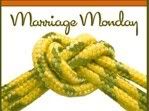TOTALLY TEAWARE!!
You want to drink tea. You gotta have the right stuff. I know you're probably thinking "What more do I need besides a cup, a tea pot, tea, and hot water?" Well, the steps to making great tea can be simplified, but to get the best infusion possible for the type of tea you're drinking and the strength you want it, you need the right teaware. Let's talk options and stuff you just have to have.
For drinking black tea, it's as easy as any old cup (although I prefer pretty and petite for any infusion I drink), boiling hot water; you're done. That's if you're going to steep in your cup. If you steep in a pot on the other hand, you have several great options. I like to steep in a pot unless I'm on the go and must steep in a tea bag and cup. Even then, I use loose tea and my own re-usable or disposable bags that I fill myself. Loose leaf, unless you just don't have a choice or you find loose leaf in a pre-sealed bag in a box, is better than just your standard tea bags filled with dustings of tea of any kind. You will know and can taste the difference. Trust me!
Anyway, there are the Chinese Yixing pots. Great for green teas and maybe Oolongs.

Yixing County, northwest of Shanghai, has been producing pottery with its famous "purple sand" clay, or zisha, since the Sung Dynasty (960-1279). But Yixing's fame (pronounced "ee-shing") really begins during the early Ming Dynasty (1279-1644) when local potters invented the teapot for steeping loose leaf tea.
Although most Yixing teapots are extremely small and crafted into unique shapes, meant for the Chinese tea ceremony, ours are simple, medium-sized teapots suitable for every day brewing.
Yixing teapots develop a rich patina with continued use, so don't use soap to clean. Just rinse out and air dry. (The information in black from http://www.indigotea.com/)
I don't use the above pots, but they are nice and I'd like to have one. You also have the Japanese Tetsubin. Japanese usually drink green tea exclusively, so these are great for greens and whites. The Yixing can definitely be used for white too.

Japanese cast iron teapots, or tetsubin teapots, evoke the ancient past. Cast iron teapots became popular in Japan in the 17th century when the practice of steeping tea leaves (instead of matcha tea powder) became popular. (The information in black from http://www.indigotea.com/)
This next one, the Kyusu, is a Japanese pot, and it is my favorite. It is the one I use every time I steep. It holds heat well (and I'm sure the ones above do too), it's easy to handle, it comes in different sizes, and it leaves you with your choice of tea's taste every steep. It gets better over time and is easy to rinse and clean. I was heartbroken when I broke my first one, and I had to immediately order a new one. Great steeping pots, unless you live near great specialty shops, are hard to find and may have to be ordered. Kyusus are great for greens and whites.

Traditional Japanese teapots are known for their unique side handle. A metal mesh screen inside the spout keeps the leaves out of your cup. The brown kyusu is a Banko pottery ware from Yokkaichi, near Nagoya. The red ware kyusu is from the famed pottery city of Tokoname, south of Nagoya. (The information in black from http://www.indigotea.com/)
For black, herbal, or oolong tea drinkers who want to steep in the pot, there is the standard ceramic or porcelain or china tea pot. In this case, I'll show you a picture of the Chatsford English tea pots, although you can buy a ceramic tea pot from just about anywhere. Black tea and herbal tisanes are consumed more often in America and Europe than green, white, or oolong, so the pots are more readily available. Even Wal-Mart will carry cute little tea pots that will work well for black tea or herbal. There are really elaborate, ornate English tea pots and sets that are wonderful to collect, display, and use.

The English really invented the art of black tea, and these English teapots are classics. This Chatsford lead-free, glazed ceramic teapot does not drip and its large, polypropylene mesh infuser basket allows the tea leaves to fully expand and release their flavor. (Chatsford teapots are manufactured in Thailand by The London Teapot Co. of London, England) (This information supplied by http://www.indigotea.com/)
You can use any tea cup you'd like, to pour your tea in from the infuser pot, but I prefer, if I'm drinking Japanese green (which I am more often than not), to use a smaller, shorter cup than a wider English style tea cup. The Japanese only drink small amounts of tea at a time, and if you pour your tea into a larger wider -mouthed cup, your tea cools too quickly for you to enjoy it. For black tea, I use my smaller cups or the wider English style cups. You can get your cups just about anywhere, but again, if you want authentic Japanese or Chinese cups, you will probably have to order them. 
 There are many stores online that carry any style and type of tea cup you could ever want. Do compare prices.
There are many stores online that carry any style and type of tea cup you could ever want. Do compare prices.

 There are many stores online that carry any style and type of tea cup you could ever want. Do compare prices.
There are many stores online that carry any style and type of tea cup you could ever want. Do compare prices.Other items, like personal tea bags for when you're on-the-go, scoops or measuring spoons, sugar bowls, milk pitchers (the English do not use cream or half-n-half like we think; they use milk, but whatever you prefer is what you should have), water kettles for boiling water (you can buy electric ones or just use the one you already have at home and buy an inexpensive thermometer for your green and white teas), tea canisters, and timers are essential items needed for the optimal tea time. You can collect these things over time and purchase most of them quite inexpensively. Most if not all of these things are readily available in your local stores. In the end, you want to make sure you have a nice collection of necessities and you'll be ready for a great 'cuppa.'
What are you waiting for? Put the kettle on, get your "stuff" out, and have some tea why don't ya.






















2 comments:
That's so cool. I love tea - but, honestly don't take the time to prepare it properly. :)
My husband received a Yixing pot and matching cups as an encouragement to properly prepare tea - he's great at it...I just go to Starbucks! Sad, huh?
Hope you are doing well.
Kelly,
Girl, join your husband in that tea-making process. You'll have so much fun and enjoyment, I promise. And that great cup of tea the process renders, will be well worth it!! And don't feel guilty about Starbucks. I like a good soy green tea latte with 5 pumps of melon and 2 packs of raw sugar.
Thanks for stopping by.
Post a Comment